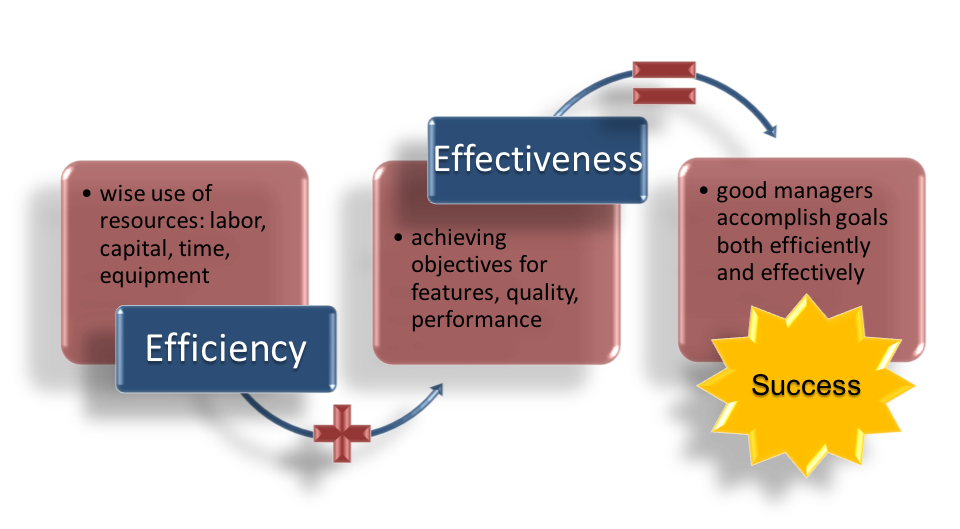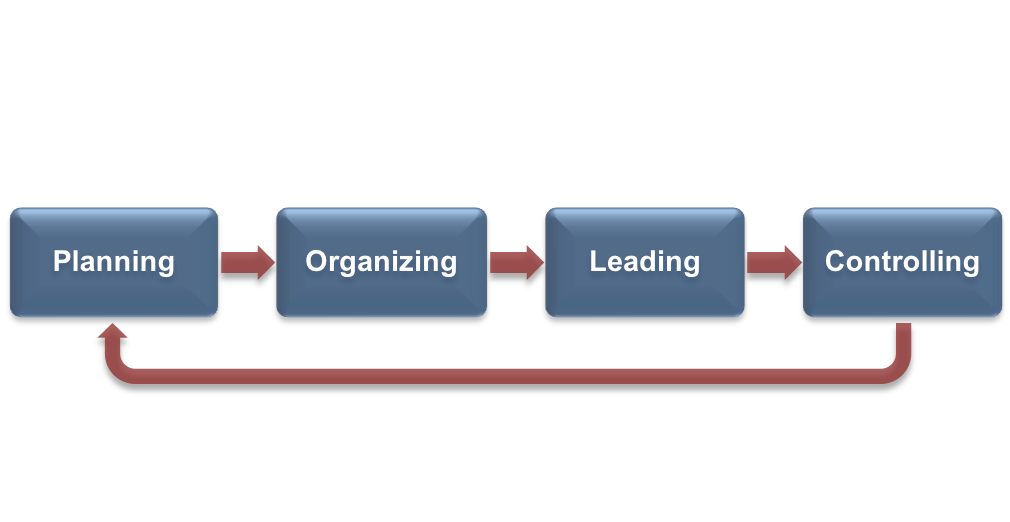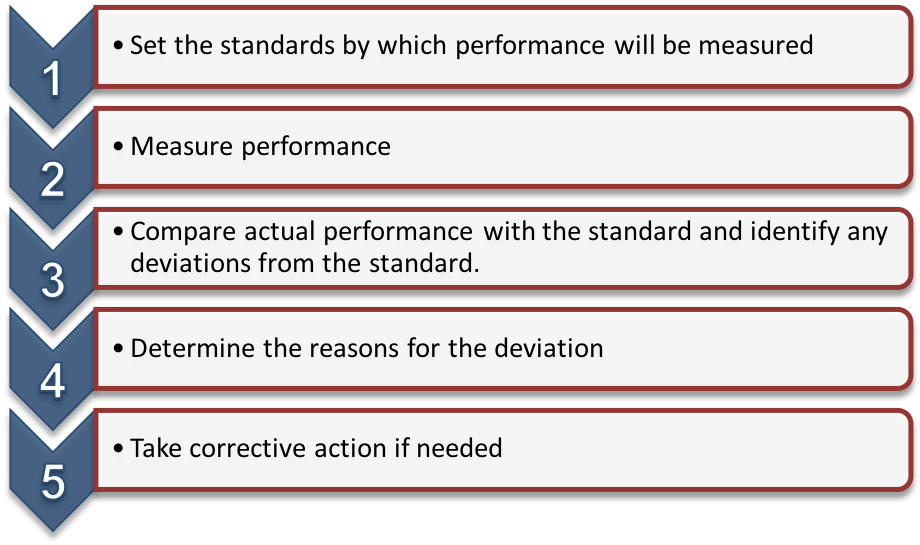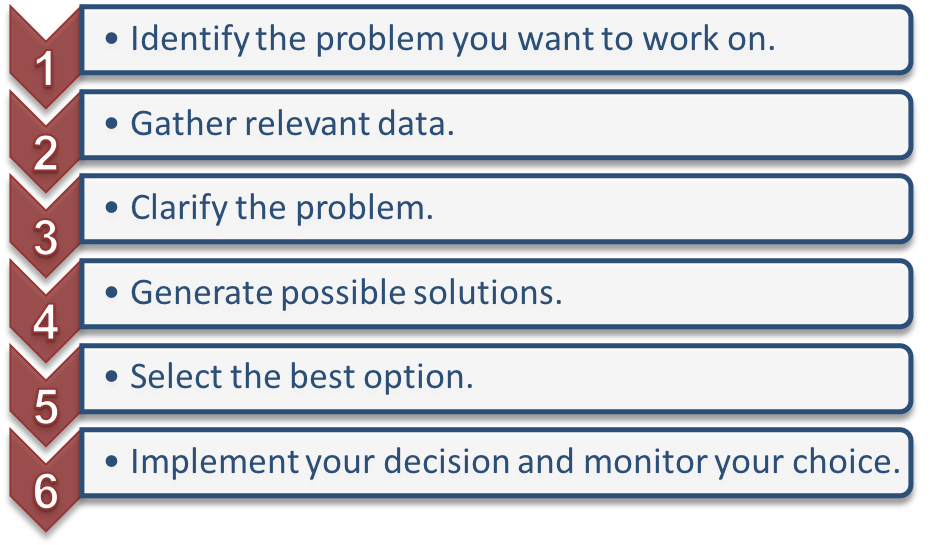Fundamentals of Financial Management Chapter 6 Solutions
Chapter 6 Management and Leadership
Stephen Skripak; Anastasia Cortes; and Anita Walz
Learning Objectives
- Identify the four interrelated functions of management: planning, organizing, leading, and controlling.
- Understand the process by which a company develops and implements a strategic plan.
- Explain how managers direct others and motivate them to achieve company goals.
- Describe the process by which a manager monitors operations and assesses performance.
- Explain what benchmarking is and its importance for managing organizations.
- Describe the skills needed to be a successful manager.
Noteworthy Management
Consider this scenario: you're halfway through the semester and ready for midterms. You open your class notes and declare them "pathetic." You regret scribbling everything so carelessly and skipping class so many times. That's when it hits you: what if there was a note-taking service on campus? When you were ready to study for a big test, you could buy complete and legible class notes. You've heard that there are class-notes services at some larger schools, but there's no such thing on your campus. So you ask yourself, why don't I start a note-taking business? Your upcoming set of exams may not be salvageable, but after that, you'd always have great notes. And in the process, you could learn how to manage a business (isn't that what majoring in business is all about?).
You might begin by hiring a bunch of students to take class notes. Then the note takers will e-mail them to your assistant, who'll get them copied (on a special type of paper that can't be duplicated). The last step will be assembling packages of notes and, of course, selling them. You decide to name your company "Notes-4-You."

It sounds like a great idea, but you're troubled by one question: why does this business need you? Do the note takers need a boss? Couldn't they just sell the notes themselves? This process could work, but it would work better if there was someone to oversee the operations: a manager—to make sure that the operations involved in preparing and selling notes were performed in both an effective and an efficient manner. You'd make the process effective by ensuring that the right things got done and that they all contributed to the success of the enterprise. You'd make the process efficient by ensuring that activities were performed in the right way and used the fewest possible resources.
What Do Managers Do?
The Management Process
The effective performance of your business will require solid management: the process of planning, organizing, leading, and controlling resources to achieve specific goals. A plan enables you to take your business concept beyond the idea stage. It does not, however, get the work done. For that to happen, you have to organize things effectively. You'll have to put people and other resources in place to make things happen. And because your note-taking venture is supposed to be better off with you in charge, you need to be a leader who can motivate your people to do well. Finally, to know whether things are in fact going well, you'll have to control your operations—that is, measure the results and compare them with the results that you laid out in your plan. Figure 6.2 summarizes the interrelationship between planning and the other functions that managers perform. This chapter will explore planning, leading, and controlling in some detail. Organizing is an especially complex topic, and will be discussed in Chapter 7.

Planning
Without a plan, it's hard to succeed at anything. The reason is simple: if you don't know where you're going, you can't move forward. Successful managers decide where they want to be and then figure out how to get there; they set goals and determine the best way to achieve them. As a result of the planning process, everyone in the organization knows what should be done, who should do it, and how to do it.
Developing a Strategic Plan
Coming up with an idea—say, starting a note-taking business—is a good start, but it's only a start. Planning for it is a step forward. Planning begins at the highest level and works its way down through the organization. Step one is usually called strategic planning: the process of establishing an overall course of action. To begin this process, you should ask yourself a couple of very basic questions: why, for example, does the organization exist? What value does it create? Sam Walton posed these questions in the process of founding Wal-Mart: his new chain of stores would exist to offer customers the lowest prices with the best possible service.1
Once you've identified the purpose of your company, you're ready to take the remaining steps in the strategic-planning process:
- Write a mission statement that tells customers, employees, and others why your organization exists.
- Identify core values or beliefs that will guide the behavior of members of the organization.
- Assess the company's strengths, weaknesses, opportunities, and threats.
- Establish goals and objectives, or performance targets, to direct all the activities that you'll perform to achieve your mission.
- Develop and implement tactical and operational plans to achieve goals and objectives.
In the next few sections, we'll examine these components of the strategic-planning process.
Mission Statement
As we saw in an earlier chapter, the mission statement describes the purpose of your organization—the reason for its existence. It tells the reader what the organization is committed to doing. It can be very concise, like the one from Mary Kay Inc. (the cosmetics company): "To enrich the lives of women around the world."2 Or it can be as detailed as the one from Harley-Davidson: "We fulfill dreams inspired by the many roads of the world by providing extraordinary motorcycles and customer experiences. We fuel the passion for freedom in our customers to express their own individuality."3
A mission statement for Notes-4-You could be the following: "To provide high-quality class notes to college students." On the other hand, you could prepare a more detailed statement that explains what the company is committed to doing, who its customers are, what its focus is, what goods or services it provides, and how it serves its customers.
It is worth noting that some companies no longer use mission statements, preferring to communicate their reason for being in other manners.
Core Values
Whether or not your company has defined a mission, it is important to identify what your organization stands for in terms of its values and the principles that will guide its actions. In Chapter 3 on Business Ethics and Social Responsibility, we explained that the small set of guiding principles that you identify as crucial to your company are known as core values—fundamental beliefs about what's important and what is and isn't appropriate in conducting company activities. Core values affect the overall planning processes and operations. At Volvo, three values— safety, quality, and environmental care—define the firm's "approach to product development, design and production."4 Core values should also guide the behavior of every individual in the organization. At Coca-Cola, for instance, the values of leadership, collaboration, integrity, accountability, passion, diversity and quality tell employees exactly what behaviors are acceptable.5 Companies communicate core values to employees and hold them accountable for putting them into practice by linking their values to performance evaluations and compensation.
In choosing core values for Notes-4-You, you're determined to be unique. After some thought, you settle on teamwork, trust, and dependability. Why these three? As you plan your business, you realize that it will need a workforce that functions as a team, trusts each other, and can be depended on to satisfy customers. In building your workforce, you'll seek employees who'll embrace these values.
Conduct a SWOT Analysis
The next step in the strategic-planning process is to assess your company's fit with its environment. A common approach to environmental analysis is matching the strengths of your business with the opportunities available to it. It's called SWOT analysis because it calls for analyzing an organization's Strengths, Weaknesses, Opportunities, and Threats. It begins with an examination of external factors that could influence the company in either a positive or a negative way. These could include economic conditions, competition, emerging technologies, laws and regulations, and customers' expectations.
One purpose of assessing the external environment is to identify both opportunities that could benefit the company and threats to its success. For example, a company that manufactures children's bicycle helmets would view a change in federal law requiring all children to wear helmets as an opportunity. The news that two large sports-equipment companies were coming out with bicycle helmets would be a threat.
The next step is to evaluate the company's strengths and weaknesses, internal factors that could influence company performance in either a positive or negative way. Strengths might include a motivated workforce, state-of-the-art technology, impressive managerial talent, or a desirable location. The opposite of any of these strengths could signal a potential weakness (poor workforce, obsolete technology, incompetent management, or poor location). Armed with a good idea of internal strengths and weaknesses, as well as external opportunities and threats, managers will be better positioned to capitalize on opportunities and strengths. Likewise, they want to improve on any weak areas and protect the organization from external threats.
For example, Notes-4-You might say that by providing excellent service at a reasonable price while we're still small, it can solidify its position on campus. When the market grows due to increases in student enrollment, the company will have built a strong reputation and be in a position to grow. So even if a competitor comes to campus (a threat), the company expects to be the preferred supplier of class notes. This strategy will work only if the note-takers are dependable and if the process does not alienate the faculty or administration.
Set Goals and Objectives
Your mission statement affirms what your organization is generally committed to doing, but it doesn't tell you how to do it. So the next step in the strategic-planning process is establishing goals and objectives. Goals are major accomplishments that the company wants to achieve over a long period. Objectives are shorter-term performance targets that direct the activities of the organization toward the attainment of a goal. They should be clearly stated, achievable, and measurable: they should give target dates for the completion of tasks and stipulate who's responsible for taking necessary actions.6
An organization will have a number of goals and related objectives. Some will focus on financial measures, such as profit maximization and sales growth. Others will target operational efficiency or quality control. Still others will govern the company's relationships with its employees, its community, its environment, or all three.
Finally, goals and objectives change over time. As a firm reassesses its place in its business environment, it rethinks not only its mission but also its approach to fulfilling it. The reality of change was a major theme when the late McDonald's CEO Jim Cantalupo explained his goal to revitalize the company:
"The world has changed. Our customers have changed. We have to change too. Growth comes from being better, not just expanding to have more restaurants. The new McDonald's is focused on building sales at existing restaurants rather than on adding new restaurants. We are introducing a new level of discipline and efficiency to all aspects of the business and are setting a new bar for performance." 7
This change in focus was accompanied by specific performance objectives—annual sales growth of 3 to 5 percent and income growth of 6 to 7 percent at existing restaurants, plus a five-point improvement (based on customer surveys) in speed of service, friendliness, and food quality.
In setting strategic goals and performance objectives for Notes-4-You, you should keep things simple. Because you need to make money to stay in business, you could include a financial goal (and related objectives). Your mission statement promises "high-quality, dependable, competitively priced class notes," so you could focus on the quality of the class notes that you'll be taking and distributing. Finally, because your mission is to serve students, one goal could be customer oriented. Your list of goals and objectives might look like this:
- Goal 1: Achieve a 10 percent return on sales in your first five years.
- Objective: Sales of $20,000 and profit of $2,000 for the first 12 months of operation.
- Goal 2: Produce a high-quality product.
- Objective: First-year satisfaction scores of 90 percent or higher on quality of notes (based on survey responses on understandability, readability, and completeness).
- Goal 3: Attain 98 percent customer satisfaction by the end of your fifth year.
- Objective: Making notes available within two days after class, 95 percent of the time.
Tactical Plans
The overall plan is broken down into more manageable, shorter-term components called tactical plans. These plans specify the activities and allocation of resources (people, equipment, money) needed to implement the strategic plan over a given period. Often, a long-range strategic plan is divided into several tactical plans; a five-year strategic plan, for instance, might be implemented as five one-year tactical plans.
Operational Plans
The tactical plan is then broken down into various operational components that provide detailed action steps to be taken by individuals or groups to implement the tactical and strategic plans. Operational plans cover only a brief period—say, a month or two. At Notes-4-You, note-takers might be instructed to submit typed class notes five hours earlier than normal on the last day of the semester (an operational guideline). The goal is to improve the customer-satisfaction score on dependability (a tactical goal) and, as a result, to earn the loyalty of students through attention to customer service (a strategic goal).

Plan for Contingencies and Crises
Even with great planning, things don't always turn out the way they're supposed to. Perhaps your plans were flawed, or maybe something in the environment shifted unexpectedly. Successful managers anticipate and plan for the unexpected. Dealing with uncertainty requires contingency planning and crisis management.
Contingency Planning
With contingency planning, managers identify those aspects of the business that are most likely to be adversely affected by change. Then, they develop alternative courses of action in case an anticipated change does occur. You engage in contingency planning any time you develop a backup or fallback plan.
Crisis Management
Organizations also face the risk of encountering crises that require immediate attention. Rather than waiting until such a crisis occurs and then scrambling to figure out what to do, many firms practice crisis management. Some, for instance, set up teams trained to deal with emergencies. Members gather information quickly and respond to the crisis while everyone else carries out his or her normal duties. The team also keeps the public, the employees, the press, and government officials informed about the situation and the company's response to it.8
An example of how to handle crisis management involves Wendy's. After learning that a woman claimed she found a fingertip in a bowl of chili she bought at a Wendy's restaurant in San Jose, California, the company's public relations team responded quickly. Within a few days, the company announced that the finger didn't come from an employee or a supplier. Soon after, the police arrested the woman and charged her with attempted grand larceny for lying about how the finger got in her bowl of chili and trying to extort $2.5 million from the company. But the crisis wasn't over for Wendy's. The incident was plastered all over the news as a grossed-out public sought an answer to the question, "Whose finger is (or was) it?" A $100,000 reward was offered by Wendy's to anyone with information that would help the police answer this question. The challenge Wendy's faced was how to entice customers to return to its fifty San Francisco–area restaurants (where sales had plummeted) while keeping a low profile nationally. Wendy's accomplished this objective by giving out free milkshakes and discount coupons to customers in the affected regions and, to avoid calling attention to the missing finger, by making no changes in its national advertising. The crisis-management strategy worked and the story died down (though it flared up temporarily when the police arrested the woman's husband, who allegedly bought the finger from a coworker who had severed it in an accident months earlier).9

Even with crisis-management plans in place, however, it's unlikely that most companies will emerge from a potentially damaging episode as unscathed as Wendy's did. For one thing, the culprits in the Wendy's case were caught, and the public was willing to forgive an organization it viewed as a victim. Given the current public distrust of corporate behavior, however, companies whose reputations have suffered due to questionable corporate judgment usually don't fare as well. These companies include the international oil company, BP, whose CEO, Tony Hayward, did a disastrous job handling the Gulf of Mexico crisis. A BP-controlled oil rig exploded in the Gulf of Mexico, killing eleven workers and creating the largest oil spill in U.S. history. Hayward's lack of sensitivity will be remembered forever; particularly his response to a reporter's question on what he would tell those whose livelihoods were ruined: "We're sorry for the massive disruption it's caused their lives. There's no one who wants this over more than I do. I would like my life back." His comment was obviously upsetting to the families of the eleven men who lost their lives on the rig.10 Then, there are the companies at which executives have crossed the line between the unethical to the downright illegal—Arthur Andersen, Enron, and Bernard L. Madoff Investment Securities, to name just a few. Given the high risk associated with a crisis, it should come as no surprise that contemporary managers spend more time anticipating crises and practicing their crisis-management responses.

Leading
The third management function is leading—providing focus and direction to others and motivating them to achieve organizational goals. As owner and president of Notes-4-You, you might think of yourself as an orchestra leader. You have given your musicians (employees) their sheet music (plans). You've placed them in sections (departments) and arranged the sections (organizational structure) so the music will sound as good as possible. Now your job is to tap your baton and lead the orchestra so that its members make beautiful music together.11
Leadership Styles
It's fairly easy to pick up a baton, cue each section, and strike up the band; but it doesn't mean the music will sound good. What if your cues are ignored or misinterpreted or ambiguous? Maybe your musicians don't like your approach to making music and will just walk away. On top of everything else, you don't simply want to make music: you want to inspire your musicians to make great music. How do you accomplish this goal? How do you become an effective leader, and what style should you use to motivate others to achieve organizational goals?
Unfortunately, there are no definitive answers to questions like these. Over time, every manager refines his or her own leadership style, or way of interacting with and influencing others. Despite a vast range of personal differences, leadership styles tend to reflect one of the following approaches to leading and motivating people: the autocratic, the democratic (also known as participative), or the free rein.
- Autocratic style. Managers who have developed an autocratic leadership style tend to make decisions without soliciting input from subordinates. They exercise authority and expect subordinates to take responsibility for performing the required tasks without undue explanation.
- Democratic style. Managers who favor a democratic leadership style generally seek input from subordinates while retaining the authority to make the final decisions. They're also more likely to keep subordinates informed about things that affect their work.
- Free-rein style. In practicing a free rein leadership style, managers adopt a "hands-off" approach and provide relatively little direction to subordinates. They may advise employees but usually give them considerable freedom to solve problems and make decisions on their own.
At first glance, you'd probably not want to work for an autocratic leader. After all, most people don't like to be told what to do without having any input. Many like the idea of working for a democratic leader; it's flattering to be asked for your input. And though working in a free rein environment might seem a little unsettling at first, the opportunity to make your own decisions is appealing to many people. Each leadership style can be appropriate in certain situations.
To illustrate, let's say that you're leading a group of fellow students in a team project for your class. Are there times when it would be best for you to use an autocratic leadership style? What if your team was newly formed, unfamiliar with what needs to be done, under a tight deadline, and looking to you for direction? In this situation, you might find it appropriate to follow an autocratic leadership style (on a temporary basis) and assign tasks to each member of the group. In an emergency situation, such as a fire, or in the final seconds of a close ball game, there is generally not time for debate – the leader or coach must make a split second decision that demands an autocratic style.
But since most situations are non-emergency and most people prefer the chance to give input, the democratic leadership style is often favored. People are simply more motivated and feel more ownership of decisions (i.e., buy-in) when they have had a chance to offer input. Note that when using this style, the leader will still make the decision in most cases. As long as their input is heard, most people accept that it is the leader's role to decide in cases where not everyone agrees.
How about free rein leadership? Many people function most effectively when they can set their own schedules and do their work in the manner they prefer. It takes a great deal of trust for a manager to employ this style. Some managers start with an assumption of trust that is up to the employee to maintain through strong performance. In other cases, this trust must be earned over a period of time. Would this approach always work with your study group? Obviously not. It will work if your team members are willing and able to work independently and welcome the chance to make decisions. On the other hand, if people are not ready to work responsibly to their best of their abilities, using the free rein style could cause the team to miss deadlines or do poorly on the project.
The point being made here is that no one leadership style is effective all the time for all people or in all corporate cultures. While the democratic style is often viewed as the most appropriate (with the free rein style a close second), there are times when following an autocratic style is essential. Good leaders learn how to adjust their styles to fit both the situation and the individuals being directed.
Transformational Leadership
Theories on what constitutes effective leadership evolve over time. One theory that has received a lot of attention in the last decade contrasts two leadership styles: transactional and transformational. So-called transactional leaders exercise authority based on their rank in the organization. They let subordinates know what's expected of them and what they will receive if they meet stated objectives. They focus their attention on identifying mistakes and disciplining employees for poor performance. By contrast, transformational leaders mentor and develop subordinates, providing them with challenging opportunities, working one-on-one to help them meet their professional and personal needs, and encouraging people to approach problems from new perspectives. They stimulate employees to look beyond personal interests to those of the group.
So, which leadership style is more effective? You probably won't be surprised by the opinion of most experts. In today's organizations, in which team building and information sharing are important and projects are often collaborative in nature, transformational leadership has proven to be more effective. Modern organizations look for managers who can develop positive relationships with subordinates and motivate employees to focus on the interests of the organization. Leaders who can be both transactional and transformational are rare, and those few who have both capacities are very much in demand.12
Controlling
Let's pause for a minute and reflect on the management functions that we've discussed so far—planning, organizing, and leading. As founder of Notes-4-You, you began by establishing plans for your new company. You defined its mission and set objectives, or performance targets, which you needed to meet in order to achieve your mission. Then, you organized your company by allocating the people and resources required to carry out your plans. Finally, you provided focus and direction to your employees and motivated them to achieve organizational objectives. Is your job finished? Can you take a well-earned vacation? Unfortunately, the answer is no: your work has just begun. Now that things are rolling along, you need to monitor your operations to see whether everything is going according to plan. If it's not, you'll need to take corrective action. This process of comparing actual to planned performance and taking necessary corrective action is called controlling.
A Five-Step Control Process
You can think of the control function as the five-step process outlined in Figure 6.7. Let's see how this process might work at Notes-4-You. Let's assume that, after evaluating class enrollments, you estimate that you can sell one hundred notes packages per month to students taking a popular sophomore-level geology course. So you set your standard at a hundred units. At the end of the month, however, you look over your records and find that you sold only eighty. In talking with your salespeople, you learn why you came up twenty packages short: it turns out that the copy machine broke down so often that packages frequently weren't ready on time. You immediately take corrective action by increasing maintenance on the copy machine.


Now, let's try a slightly different scenario. Let's say that you still have the same standard (one hundred packages) and that actual sales are still eighty packages. In investigating the reason for the shortfall, you find that you overestimated the number of students taking the geology course. Calculating a more accurate number of students, you see that your original standard—estimated sales—was too high by twenty packages. In this case, you should adjust your standards to reflect expected sales of eighty packages.
In both situations, your control process has been helpful. In the first instance, you were alerted to a problem that cut into your sales. Correcting this problem would undoubtedly increase sales and, therefore, profits. In the second case, you encountered a defect in your planning and learned a good managerial lesson: plan more carefully.
Benchmarking
Benchmarking could be considered as a specialized kind of control activity. Rather than controlling a particular aspect of performance (say, defects for a specific product), benchmarking aims to improve a firm's overall performance. The process of benchmarking involves comparisons to other organizations' practices and processes with the objective of learning and improvement in both efficiency and effectiveness. Benchmarking exercises can be conducted in a number of ways:
- Organizations often monitor publicly available information to keep tabs on the competition. Annual reports, news articles, and other sources are monitored closely in order to stay aware of the latest developments. In academia, universities often use published rankings tables to see how their programs compare on the basis of standardized test scores, salaries of graduates, and other important dimensions.
- Organizations may also work directly with companies in unrelated industries in order to compare those functions of the business which are similar. A manufacture of aircraft would not likely have a great deal in common with a company making engineered plastics, yet both have common functions such as accounting, finance, information technology, and human resources. Companies can exchange ideas that help each other improve efficiency, and often at a very low cost to either.
- In order to compare more directly to competition without relying solely on publicly available data, companies may enter into benchmarking consortiums in which an outside consultant would collect key data from all participants, anonymize it, and then share the results with all participants. Companies can then gauge how they compare to others in the industry without revealing their own performance to others.
Managerial Skills
To be a successful manager, you'll have to master a number of skills. To get an entry- level position, you'll have to be technically competent at the tasks you're asked to perform. To advance, you'll need to develop strong interpersonal and conceptual skills. The relative importance of different skills varies from job to job and organization to organization, but to some extent, you'll need them all to forge a managerial career.
Throughout your career, you'll also be expected to communicate ideas clearly, use your time efficiently, and reach sound decisions.
Technical Skills
You'll probably be hired for your first job based on your technical skills—the ones you need to perform specific tasks—and you'll use them extensively during your early career. If your college major is accounting, you'll use what you've learned to prepare financial statements. If you have a marketing degree and you join an ad agency, you'll use what you know about promotion to prepare ad campaigns. Technical skills will come in handy when you move up to a first-line managerial job and oversee the task performance of subordinates. Technical skills, though developed through job training and work experience, are generally acquired during the course of your formal education.
Interpersonal Skills
As you move up the corporate ladder, you'll find that you can't do everything yourself: you'll have to rely on other people to help you achieve the goals for which you're responsible. That's why interpersonal skills, also known as relational skills—the ability to get along with and motivate other people—are critical for managers in mid-level positions. These managers play a pivotal role because they report to top-level managers while overseeing the activities of first-line managers. Thus, they need strong working relationships with individuals at all levels and in all areas. More than most other managers, they must use "people skills" to foster teamwork, build trust, manage conflict, and encourage improvement.13
Conceptual Skills
Managers at the top, who are responsible for deciding what's good for the organization from the broadest perspective, rely on conceptual skills—the ability to reason abstractly and analyze complex situations. Senior executives are often called on to "think outside the box"—to arrive at creative solutions to complex, sometimes ambiguous problems. They need both strong analytical abilities and strong creative talents.
Communication Skills
Effective communication skills are crucial to just about everyone. At all levels of an organization, you'll often be judged on your ability to communicate, both orally and in writing. Whether you're talking informally or making a formal presentation, you must express yourself clearly and concisely. Talking too loudly, rambling, and using poor grammar reduce your ability to influence others, as does poor written communication. Confusing and error-riddled documents (including e-mails) don't do your message any good, and they will reflect poorly on you.14
Time-Management Skills
Managers face multiple demands on their time, and their days are usually filled with interruptions. Ironically, some technologies that were supposed to save time, such as voicemail and e-mail, have actually increased workloads. Unless you develop certain time-management skills, you risk reaching the end of the day feeling that you've worked a lot but accomplished little. What can managers do to ease the burden? Here are a few common-sense suggestions:
- Prioritize tasks, focusing on the most important things first.
- Set aside a certain time each day to return phone calls and answer e-mail.
- Delegate routine tasks.
- Don't procrastinate.
- Insist that meetings start and end on time, and stick to an agenda.
- Eliminate unnecessary paperwork.15
Decision-Making Skills
Every manager is expected to make decisions, whether alone or as part of a team. Drawing on your decision-making skills is often a process in which you must define a problem, analyze possible solutions, and select the best outcome. As luck would have it, because the same process is good for making personal decisions, we'll use a personal example to demonstrate the process approach to decision making. Consider the following scenario: you're upset because your midterm grades are much lower than you'd hoped. To make matters worse, not only are you in trouble academically, but also the other members of your business-project team are annoyed because you're not pulling your weight. Your lacrosse coach is very upset because you've missed too many practices, and members of the mountain-biking club of which you're supposed to be president are talking about impeaching you if you don't show up at the next meeting. And your significant other is feeling ignored.
A Six-Step Approach to Decision Making
Assuming that your top priority is salvaging your GPA, let's tackle your problem by using a six-step approach to solving problems that don't have simple solutions. We've summarized this model in Figure 6.816

Identify the problem you want to work on
Step one is getting to know your problem, which you can formulate by asking yourself a basic question: how can I improve my grades?
Gather relevant data
Step two is gathering information that will shed light on the problem. Let's rehash some of the relevant information that you've already identified: (a)you did poorly on your finals because you didn't spend enough time studying; (b) you didn't study because you went to see your girlfriend (who lives about three hours from campus) over the weekend before your exams (and on most other weekends, as a matter of fact); (c) what little studying you got in came at the expense of your team project and lacrosse practice; and (d) while you were away for the weekend, you forgot to tell members of the mountain-biking club that you had to cancel the planned meeting.
Clarify the problem
Once you review all the given facts, you should see that your problem is bigger than simply getting your grades up; your life is pretty much out of control. You can't handle everything to which you've committed yourself. Something has to give. You clarify the problem by summing it up with another basic question: what can I do to get my life back in order?
Generate possible solutions
Let's say that you've come up with the following possible solutions to your problem: (a) quit the lacrosse team, (b) step down as president of the mountain-biking club, (c) let team members do your share of work on the business project, and (d) stop visiting your significant other so frequently. The solution to your main problem—how to get your life back in order—will probably require multiple actions.
Select the best option
This is clearly the toughest part of the process. Working your way through your various options, you arrive at the following conclusions: (a) you can't quit the lacrosse team because you'd lose your scholarship; (b) you can resign your post in the mountain-biking club, but that won't free up much time; (c) you can't let your business-project team down (and besides, you'd just get a low grade); and (d) she wouldn't like the idea, but you could visit your girlfriend, say, once a month rather than once a week. So what's the most feasible (if not necessarily perfect) solution? Probably visiting your significant other once a month and giving up the presidency of the mountain-biking club.
Implement your decision and monitor your choice
When you call your girlfriend, you're pleasantly surprised to find that she understands. The vice president is happy to take over the mountain-biking club. After the first week, you're able to attend lacrosse practice, get caught up on your team business project, and catch up in all your other classes. The real test of your solution will be the results of the semester's finals.
Revisiting Qualtrax
In a previous chapter, we described the decisions made by Foxguard Solutions about its Qualtrax business, a new business venture developed inside the company. The decisions Foxguard made track quite well with the process described above. Consider the following:
Problem Identification— Foxguard had a business line that wasn't an exact fit with its other business and was not performing up to the potential management believed it held.
Gather Relevant Data— When Amy Ankrum was promoted, one of her first priorities was to determine what information would help her to understand the potential for the business and the resources needed to improve it.
Clarify the Problem— Qualtrax had a definite market and potential to grow, but the parent company hadn't invested time/energy into doing that. Would more focus grow the business?
Generate Possible Solutions— Management could have continued to try to grow the business in-house, sell it to another company, or spin it off
Select Best Option— After a careful evaluation, management decided the spin-off was the best option to unleash the full potential of Qualtrax
Implement and Monitor— The decision to spin-off Qualtrax could be measured on metrics such as growth in revenue, profits, and employee satisfaction. Based on the results to-date, it certainly seems like they made the right decision.
Applying Your Skills at Notes-4-You
So, what types of skills will managers at Notes-4-You need? To oversee note-taking and copying operations, first-line managers will require technical skills, probably in operations and perhaps in accounting. Middle managers will need strong interpersonal skills to maintain positive working relationships with subordinates and to motivate them. As president (the top manager), you'll need conceptual skills to solve problems and come up with creative ways to keep the business growing. And everyone will have to communicate effectively: after all, because you're in the business of selling written notes, it would look pretty bad if your employees wrote poorly. Finally, everyone will have to use time efficiently and call on problem-solving skills to handle the day-to-day crises that seem to plague every new company.
Chapter Video
Roselinde Torres is an extremely accomplished leadership expert, and her TED Talk shares her insights on what it takes to be a great leader. If you have not seen TED Talks before, you will likely see a great many more before you graduate.
(Video license: CC BY NC ND 4.0)
Key Takeaways
- Management must include both efficiency (accomplishing goals using the fewest resources possible) and effectiveness (accomplishing goals as accurately as possible).
- The management process has four functions: planning, organizing, leading, and controlling.
- Planning for a business starts with strategic planning—the process of establishing an overall course of action.
- Management first identifies its purposes, creates a mission statement, and defines its core values.
- A SWOT analysis assesses the company's strengths and weaknesses and its fit with the external environment.
- G oals and objectives, or performance targets, are established to direct company actions, and tactical plans and operational plans implement objectives.
- A manager's leadership style varies depending on the manager, the situation, and the people being directed. There are several management styles.
- An autocratic manager tends to make decisions without input and expects subordinates to follow instructions.
- Managers who prefer a democratic style seek input into decisions.
- A free rein manager provides no more guidance than necessary and lets subordinates make decisions and solve problems.
- Transactional style managers exercise authority according to their rank in the organization, let subordinates know what's expected of them, and step in when mistakes are made.
- Transformational style managers mentor and develop subordinates and motivate them to achieve organizational goals.
- The control process can be viewed as a five-step process: (1) establish standards, (2) measure performance, (3) compare actual performance with standards and identify any deviations, (4) determine the reason for deviations, and (5) take corrective action if needed.
- Benchmarking is a process for improving overall company efficiency and effectiveness by comparing performance to competitors.
- Top managers need strong conceptual skills, while those at midlevel need good interpersonal skills and those at lower levels need technical skills.
- All managers need strong communication, decision-making, and time- management skills.
Chapter 6 Text References and Image Credits
Image Credits: Chapter 6
Figure 6.3: "Apple laptop and notes." Public domain. Retrieved from: https://www.pexels.com/photo/notes-macbook-study-conference-7102/
Figure 6.4: Dave Mcmt (2009). "A Wendy's in Miles City Montana." CC-BY-2.0. Retrieved from: https://commons.wikimedia.org/wiki/File:Miles_City_MT_-_Wendy%27s.jpg
Figure 6.5: The U.S. Coast Guard (2010). "The Deepwater Horizon Offshore Drilling Unit on Fire." Public domain. Retrieved from: https://commons.wikimedia.org/wiki/File:Deepwater_Horizon_offshore_drilling_unit_on_fire.jpg
Figure 6.6: Luis Dantas (2007). "A Samsung desktop SOHO MFP." Public domain. Retrieved from: https://en.wikipedia.org/wiki/Multi-function_printer#/media/File:Multifunctional_Samsung.jpg
Video Credits: Chapter 6
Torres, Roselinde. "What it Takes to be a Great Leader." (TED). October 2013. Retrieved from: https://www.ted.com/talks/roselinde_torres_what_it_takes_to_be_a_great_leader?language=en
References: Chapter 6
1 Wal Mart (2016). "Our Story." Walmart.com. Retrieved from: http://corporate.walmart.com/our-story/our-history
7 Franchise Bison (2003). ""McDonald's Announces Plans to Revitalize Its Worldwide Business and Sets New Financial Targets." Franchisebison.com. Retrieved from: http://www.bison1.com/press_mcdonalds_04072003
12 Sarah Burke and Karen M. Collins, (2001). "Gender differences in leadership styles and management skills." Women in Management Review. PP.244 – 257
14 Brian L. Davis et al. (1992). Successful Manager's Handbook: Development Suggestions for Today's Managers. Minneapolis: Personnel Decisions Inc. P. 189.
15 Ibid.
16 Shari Caudron (1998). "Six Steps in Creative Problem Solving." Controller Magazine. P. 38. Caudron describes a systematic approach developed by Roger L. Firestien, president of Innovation Systems Group, Williamsville, NY.
Fundamentals of Financial Management Chapter 6 Solutions
Source: https://wtcs.pressbooks.pub/fundamentalsofbusiness/chapter/chapter-6-management-and-leadership/